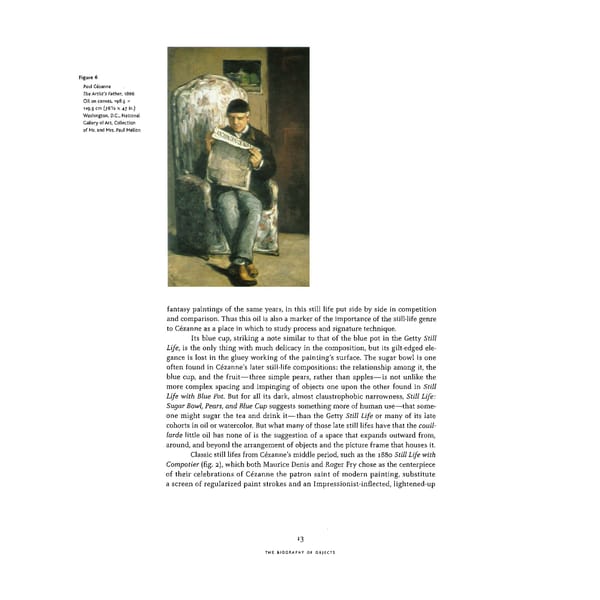Figure 6 Paul Cezanne The Artist's Father, 1866 Oil on canvas, 198.5 x cm 119.3 (/SVs x 47 in.) Washington, D.C., National Gallery of Art, Collection of Mr. and Mrs. Paul Mellon fantasy paintings of the same years, in this still life put side by side in competition and comparison. Thus this oil is also a marker of the importance of the still-life genre to Cezanne as a place in which to study process and signature technique. Its blue cup, striking a note similar to that of the blue pot in the Getty Still Life, is the only thing with much delicacy in the composition, but its gilt-edged ele- gance is lost in the gluey working of the painting's surface. The sugar bowl is one often found in Cezanne's later still-life compositions: the relationship among it, the blue cup, and the fruit—three simple pears, rather than apples—is not unlike the more complex spacing and impinging of objects one upon the other found in Still Life with Blue Pot. But for all its dark, almost claustrophobic narrowness, Still Life: Sugar Bowl, Pears, and Blue Cup suggests something more of human use—that some- one might sugar the tea and drink it—than the Getty Still Life or many of its late cohorts in oil or watercolor. But what many of those late still lifes have that the couil- larde little oil has none of is the suggestion of a space that expands outward from, around, and beyond the arrangement of objects and the picture frame that houses it. Classic still lifes from Cezanne's middle period, such as the 1880 Still Life with Compotier (fig. 2), which both Maurice Denis and Roger Fry chose as the centerpiece of their celebrations of Cezanne the patron saint of modern painting, substitute a screen of regularized paint strokes and an Impressionist-inflected, lightened-up 13 THE BIOGRAPHY OF OBJECTS
 Cézanne in the Studio: Still Life in Watercolors Page 27 Page 29
Cézanne in the Studio: Still Life in Watercolors Page 27 Page 29